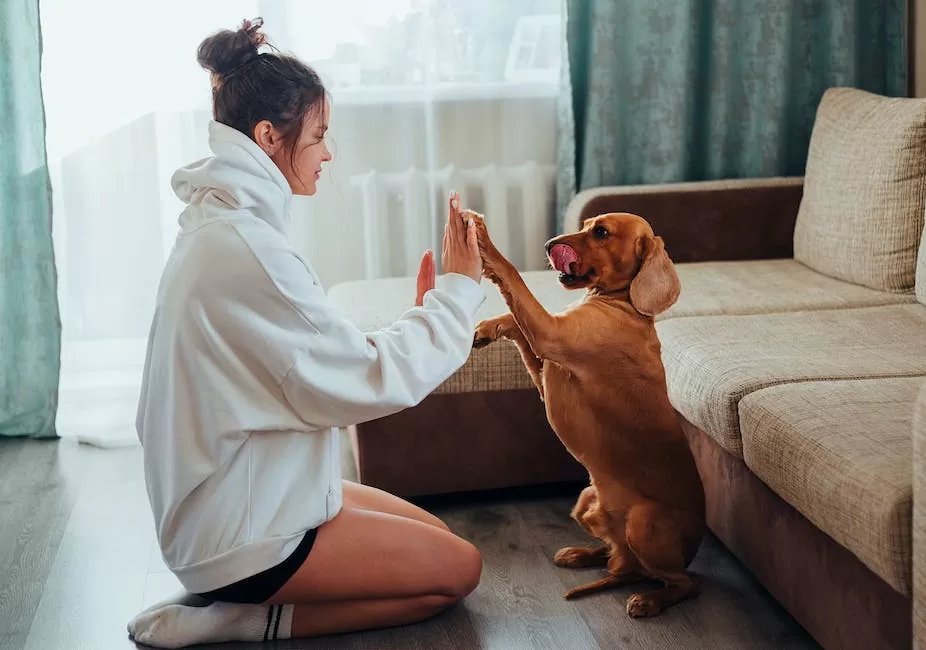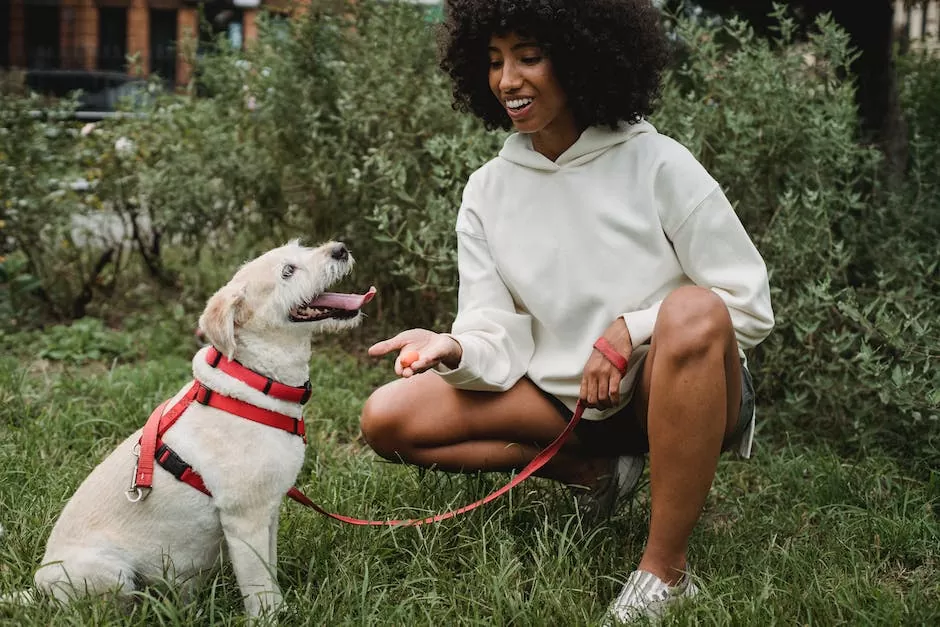How to teach a dog to take treats gently?

Whether you’retraining a puppy or teaching an old dog new tricks, one thing’s for sure—positive reinforcementtraining always works best. Treats are a great way to reward your dog for a job well done, butif you’re not careful, they can also turn into an opportunity for your dog to get overexcited andjumpy. In order to avoid this, it’s important to teach your dog to take treats gently.
Using treats is a great way to teach your dog lots of different things, including taking food gently from your hand. When you first start out, it’s best to use small, soft treats that can easily be broken into pieces. Make sure your dog is paying attention to you and is sitting or standing calmly before offering the treat. Hold the treat close to your dog’s nose and say the cue word or phrase you want to use, such as “gentle” or “take it easy.” Once your dog takes the treat gently from your hand, give lots of praise and another treat. If your dog tries to snatch the treat or bites your hand, quickly move your hand away and try again. With patience and practice, your dog will learn to take treats gently from your hand.
How do you train a dog that gets too excited about treats?
If you don’t want to encourage excited behavior in your dog, the best thing to do is to ignore him when he starts to get worked up. This means no petting, no talking, and no eye contact. Just act like he’s not there and eventually he’ll calm down.
There are still ways to teach adult dogs how to play nicely with others. Start with a foundation of obedience. Stop it before it starts. Don’t rehearse bad behavior. Teach a “settle” cue.
How do I stop my dog from lunging for treats
If your pup tries to get up and lunge towards the treat, pull your hand back and give him the ‘sit-stay’ command When he does, go ahead and give him the treat.
Puppies usually start to calm down as they reach maturity, which is typically around 12 months. However, for larger breeds, it may not happen until 18 months or 2 years.
How do I teach my dog to calm down and relax on cue?
This is a training technique to help your dog relax. When she is lying down on her side, gently say the cue ‘relax’ as you stroke her with a long stroking motion. Keep the tone of your voice low and calm. Repeat this at various times of the day when you see her in that position and in a calm state.
Dogs are very intelligent creatures and can learn a variety of tricks. However, some tricks can be more difficult to train than others. Here are 15 of the most difficult tricks to train dogs:
1. Go and Fetch – This trick requires the dog to fetch an object and bring it back to the owner.
2. Playing the piano – This trick requires the dog to press keys on a piano to create music.
3. Wait – This trick requires the dog to stay in one spot and not move until the owner gives the command to do so.
4. Play Dead – This trick requires the dog to lie down on its back and remain still, as if it were dead.
5. Sit Pretty – This trick requires the dog to sit up on its hind legs and balance itself.
6. Walking Backward – “Back Up” – This trick requires the dog to walk backward a few steps when the owner gives the command.
7. Tug / Tugging (Open The Door) – This trick requires the dog to tug on a rope or door handle to open it.
8. The Bang Performance – This trick requires the dog to lie down and play dead when
Where to touch a dog to calm them down?
One type of back rub that can be calming and relaxing for dogs is when you stroke up and down either side of their spine using very gentle pressure. Be sure to stay off the bone. This can be a good dog massage for anxiety, particularly for dogs who are fearful of human touch.
Most dogs dislike being touched on top of the head and on the muzzle, ears, legs, paws and tail. This is because they are very sensitive areas and even the slightest wrong move can cause discomfort. Slow petting, similar to gentle massage or light scratching, can calm a dog down. Place your hand on an area where the dog enjoys being handled and gently move your hand or fingers in the same direction the fur lies.
How do you walk a dog that pulls
If your dog pulls, there are two options:
1. Stop immediately and don’t move until your pup lets up and there is slack in the leash.
2. You may have to stop again three seconds later and do the same thing and that’s okay. Just be consistent about refusing to let them pull.
It’s natural for dogs to compete for food, but that doesn’t mean you should allow them to act aggressively around food. If your dog is exhibiting food aggression, try to redirect their attention with a toy or bone before they start growling or snapping. If that doesn’t work, you may need to get help from a professional trainer to teach your dog how to be more respectful around food.
How do you stop a dog from pulling and lunging on a leash?
A buckle collar can put a lot of pressure on your dog’s throat when they lunge, so a front-clip harness is a better choice. It will put the pressure on your dog’s chest and help turn them back toward you when they spring forward. A head halter (also called a head harness) is another option for a leash-reactive dog.
The most challenging time of raising a puppy is the adolescent period. Dogs become “teenagers” and seem to forget everything they have ever been taught. This period is individual to each dog, but it may begin when he’s about eight months old and continue until he’s two years old.
At what age are dogs most disobedient
Dogs will often go through a rebellious “teenager” phase (around 5 months to 18 months). During this time, they’ll often test their owners, seeing what they can get away with. This is normal behavior for dogs, and owners should be prepared for it. During this phase, owners should be consistent in their training and discipline, so that the dog knows what is expected of them.
Adolescence is a critical period in a dog’s life, during which they undergo many changes both mentally and physically. This is the time when they are learning how to interact with other dogs and people, and developing their own identity. Many behavioral issues can first arise during adolescence, so it is important to be aware of them and to provide positive guidance and direction during this time. With patience and consistency, most adolescent dogs will grow into well-rounded adults that are a joy to be around.
How do you calm down a high strung dog?
If your dog is hyperactive, it is important to get them the exercise they need to burn off all that energy. A simple leash walk twice a week is not going to cut it. You may need to consider a diet switch as well, consultation with a behaviorist, and/or medications.
It’s important to socialize your dog from a young age so that they are comfortable around new people. Try having a friend ring the bell and then rewarding your dog for staying calm and continuing to sit. You can repeat this exercise with the dog sitting for as long as possible. Once your visitor is ready to interact with the dog, let them know it is ok to greet them.
What are the 10 hardest dog breeds to train
There’s no definitive answer to this question since it largely depends on the individual dog’s personality and level of obedience. However, some breeds are known to be more difficult to train than others. These include Rottweilers, American Pit Bull Terriers, Siberian Huskies, Bullmastiffs, Chinese Shar-Pei, Afghan Hounds, Basset Hounds, and Beagles. With patience and consistent training, though, even the most challenging dog can be trained to obey commands and behave well.
The border collie is the smartest dog breed known to man, according to ‘The Intelligence of Dogs’. This breed is followed by the poodle, German shepherd, golden retriever, Doberman pinscher, Shetland sheepdog and labrador retriever.
What is the easiest trick to teach a dog
The “sit” command is an essential trick for dogs to learn. It is the basis for many other simple tricks like “shake” and “stay”. To teach this trick, keep your foot on your dog’s leash, allowing them only a little room to move but not enough to jump up.
Here are a few things you should never do to your dog according to veterinarians. Never allow your dog to run with a stick in their mouth as it could cause them to choke. Don’t put your dog on a retractable leash as it could be harmful if they were to run into something. Never yank on your dog’s leash or use a choke collar as it could damage their throat. It’s never a good idea to put sunscreen on your dog as it could be toxic if they were to lick it off.
Conclusion
To teach your dog to take treats gently, start by offering the treat in your palm with your fingers flat. Once your dog takes the treat, close your fingers around it so they have to work a little harder to get it out. If they start to nibble on your fingers, pull your hand away and try again. Be patient and keep rewarding your dog for taking the treat gently until they get the hang of it.
In conclusion, teaching your dog to take treats gently is a process that requires patience and positive reinforcement. Start by offering your dog a treat and holding it out in your open palm. If your dog jumps at the treat or grabs it too roughly, say “no” in a firm voice and close your hand. Once your dog calms down, try again. Repeat this process until your dog is taking the treat lightly from your hand. Remember to praise and reward your dog each time he or she does it correctly.